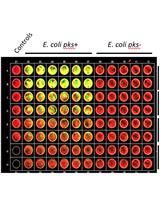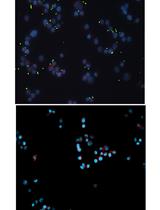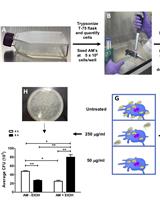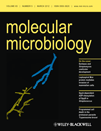- Submit a Protocol
- Receive Our Alerts
- Log in
- /
- Sign up
- My Bio Page
- Edit My Profile
- Change Password
- Log Out
- EN
- EN - English
- CN - 中文
- Protocols
- Articles and Issues
- For Authors
- About
- Become a Reviewer
- EN - English
- CN - 中文
- Home
- Protocols
- Articles and Issues
- For Authors
- About
- Become a Reviewer
Intracellular Macrophage Infections with E. coli under Nitrosative Stress
Published: Vol 2, Iss 20, Oct 20, 2012 DOI: 10.21769/BioProtoc.275 Views: 14161

Protocol Collections
Comprehensive collections of detailed, peer-reviewed protocols focusing on specific topics
Related protocols

Quantification of Colibactin-associated Genotoxicity in HeLa Cells by In Cell Western (ICW) Using γ-H2AX as a Marker
Sophie Tronnet and Eric Oswald
Mar 20, 2018 7976 Views

Adhesion of Enteroaggregative E. coli Strains to HEK293 Cells
Jorge Luis Ayala-Lujan and Fernando Ruiz-Perez
Apr 20, 2018 6783 Views

Intracellular Invasion and Killing Assay to Investigate the Effects of Binge Alcohol Toxicity in Murine Alveolar Macrophages
Victor Jimenez Jr and Fernando P Monroy
Jan 20, 2019 6637 Views
Abstract
Escherichia coli (E. coli) produces disseminated infections of the urinary tract, blood, and central nervous system where it encounters professional phagocytes such as macrophages, which utilize reactive nitrogen intermediates (RNI) to arrest bacteria. In vitro, extraintestinal pathogenic E. coli (ExPEC) can survive within bone marrow-derived macrophages for greater than 24 h post-infection within a LAMP1+ vesicular compartment, and ExPEC strains, in particular, are better adapted to intracellular macrophage survival than commensal strains (Bokil et al., 2011). This protocol details an intracellular murine macrophage-like cell infection, including modulation of the host nitrosative stress response, to model this host-pathogen interaction in vitro. To accomplish this, RAW 264.7 murine macrophage-like cells are pre-incubated with either L-arginine, an NO precursor, or IFNγ to yield a high nitric oxide (NO) physiological state, or L-NAME, an inducible NO synthase (iNOS)-specific inhibitor, to yield a low NO physiological state. This protocol has been successfully utilized to assess the contribution of a novel ExPEC regulator to intracellular survival and the nitrosative stress response during macrophage infections (Bateman and Seed, 2012), but can be adapted for use with a variety of E. coli strains or isogenic deletions.
Materials and Reagents
- E. coli isolate UTI89 (Note 1) (or other ExPEC strain)
- Luria-Bertani broth (LB) culture medium
- RAW 264.7 mouse macrophage-like cells (Note 2)
- DMEM [high glucose (HG), 4,500 mg/L]
- Fetal bovine serum (FBS) (Sigma-Aldrich)
- 1x Phosphate buffered saline (PBS)
- Gentamicin (50 mg/ml stock)
- L-arginine
- L-NAME (Cayman Chemical Company)
- IFNγ, recombinant mouse (EMD Millipore, catalog number: IF005 )
- 1% Triton-X 100 (see Recipes)
- RAW 264.7 media (DMEM + 10% FBS) (see Recipes)
- 1 M L-arginine stock solution (see Recipes)
- 1M L-NAME stock Solution (see Recipes)
Equipment
- 24 well tissue culture trays
- Table-top swinging bucket centrifuge with microtray adaptors
- 37 °C incubator with aeration (for liquid bacterial cultures)
- 37 °C incubator with 5% CO2 [for macrophage cultures (Note 3)]
- Spectrophotometer
- 0.2 micron filter
Procedure
- Day 1
- Start 5 ml overnight (16-18 h) culture of E. coli isolate UTI89 (or other ExPEC strain) in LB at 37 °C with aeration.
- Seed RAW 264.7 cells into 24 well trays (Note 4) at a density of 1 x 105 cells/well and allow to adhere and grow to confluence for 36-42 h prior to infection. For general maintenance, RAW 264.7 murine macrophages are routinely grown in DMEM (HG) + 10% FBS and sub-cultured 1:4 approximately every 3 days using a cell scraper to detach adherent cells for sub-culture.
- Start 5 ml overnight (16-18 h) culture of E. coli isolate UTI89 (or other ExPEC strain) in LB at 37 °C with aeration.
- Day 2
- Back-dilute bacterial culture 1:100 into 10 ml fresh LB media, and grow statically at 37 °C for 18-24 h to induce expression of type 1 pili adherence factor. This can be accomplished in an Erlenmeyer flask or sterile petri dish.
- To stimulate NO expression and the production of cytokines, pre-treat several wells of RAW 264.7 cells with 1 ng/ml IFNγ for 16-18 h (overnight) prior to infection (see diagram of 24-well tray below).
- Back-dilute bacterial culture 1:100 into 10 ml fresh LB media, and grow statically at 37 °C for 18-24 h to induce expression of type 1 pili adherence factor. This can be accomplished in an Erlenmeyer flask or sterile petri dish.
- Day 3
- 1 mM L-arginine is included in the media of a second group of RAW 264.7 cells for 1 h to pre-load cells for nitric oxide production upon stimulation with E. coli infection. L-arginine is a precursor to NO.
- A third group of RAW 264.7 cells is pre-treated with 1 mM of the iNOS-specific inhibitor L-NAME for 1 h prior to infection to inhibit NO production. L-arginine and L-NAME are subsequently included in the media for the duration of the experiments.
- Finally, a fourth group of RAW 264.7 cells is left untreated (naive) to serve as an un-stimulated control.
- Infect cells with E. coli by adding 10 μl of an OD600= 0.8 bacterial suspension (~1 x 107 colony forming units (CFU)7 or multiplicity of infection (MOI) of 10) in PBS to confluent cell monolayers (~1 x 106 cells/well) for all 4 treatment groups.
- Centrifuge plates in a swinging bucket clinical centrifuge with microtray adaptors at low speed to bring bacteria in contact with the cell monolayer (5 min at 1,000 rpm) and then incubated for 1 h at 37 °C with 5% CO2.
- Determine initial 1 h adherence/invasion for the various treatment groups by following steps m through p). This number will be used to normalize CFU/well at 24 h post-infection to account for any difference in initial adherence/invasion among the various treatment groups or bacterial strains (Note 6).
- For the remainder of the treatment groups, wash infected monolayers 3 times with 0.5 ml PBS (avoid touching the monolayer with pipette tips or directly applying the wash onto the monolayer as this may disturb the integrity of the monolayer. This step is to remove the majority of extracellular bacteria).
- Incubate for the remainder of the 24 h experiment using a step-down gentamicin protocol (100 μg/ml gentamicin in DMEM HG + 10% FBS for 2 h then exchange for media with 50 μg/ml gentamicin for 21 h) (Note 7).
- 1 mM L-arginine is included in the media of a second group of RAW 264.7 cells for 1 h to pre-load cells for nitric oxide production upon stimulation with E. coli infection. L-arginine is a precursor to NO.
- Day 4
- Wash cells 3 times with 0.5 ml PBS.
- Remove last wash and add 1 ml PBS + 0.1% Triton-X. Pipet vigorously to lyse cells. Minor foaming is acceptable.
- Determine intracellular bacterial burden by plating serial dilutions in LB (including appropriate antibiotics depending on bacterial strain) and incubating at 37 °C overnight.
- Wash cells 3 times with 0.5 ml PBS.
- Day 5
- Count bacterial CFU on plates.
- Intracellular burden at 24 h post-infection for various treatment groups and/or bacterial strains should be normalized to the corresponding 1 h adherence/invasion counts. Bacterial burden for each strain and/or group can be plotted using your favorite graphing program (Excel, GraphPad, etc.). Unpaired, two-tailed Student’s t-tests can be used to determine statistical significance, which is defined as attaining p-values ≤ 0.05.
- Count bacterial CFU on plates.
Treatment Groups and Controls

Notes
- UTI89 is a prototypic ExPEC cystitis isolate that was obtained from an adult patient with cystitis and has been well described in the literature (Mulvey, 1998). Other ExPEC isolates can be used as well.
- RAW 264.7 cells were purchased from the ATCC.
- Note that you will need to put bacteria-infected macrophages into your tissue culture incubator if you do not separate CO2-injected incubators for microbiology and sterile tissue culture work. If you have only a single incubator that is considered sterile, you may place your infected macrophage culture trays inside a plastic food container without the lid. Over the top, place an unfolded dry autoclaved paper towel and use a rubber band to seal it over the plastic food contained. Wipe the outside of the plastic contained with 70% ethanol and place the whole container in the tissue culture incubator. The paper towel will allow gas exchange of the cultures while preventing aerosols from escaping.
- The number of trays needed will depend on several factors. There are 4 treatment groups: untreated, L-NAME (inhibition of NO), L-arginine (high NO), and IFNγ (activation of macrophages leading to high NO and cytokine production). One set will be used to determine initial 1 h adherence/invasion and one set will be used for 24 h (or another time-point) intracellular infections. The diagram of treatment groups and controls is meant as a starting point only. Additional technical and biological replicates should be included to determine experimental variation.
- Prior to starting infections, researchers should determine bacterial CFU in a PBS suspension by serial dilution plating. This will give you an estimate for the amount of bacterial suspension to add per well. Serial dilutions of the bacterial inoculation should also be performed at every infection to determine the exact MOI for ach experiment. In parallel, use a hemocytometer to count cells in a confluent monolayer at the time of infection to give an accurate MOI.
- This is an important step to determine the intracellular survival after different treatments or in different strains. If initial adherence/invasion rates are different, subsequent intracellular survival rates at 24 h post-infection will be skewed. Proceed to step (m) for initial 1 h adherence/invasion. Continue through all steps for 24 h infections.
- IFNγ is not included in the media after the initiation of infections; however, L-arginine and L-NAME are included in the media for the duration of the experiments.
Recipes
- RAW 264.7 media (DMEM + 10% FBS)
450 ml DMEM (HG)
50 ml FBS
Filter sterilize through 0.2 micron filter unit. Make as much as need based on the number of bacterial strains tested and replicates. - 1 M L-arginine stock solution
0.871 g L-arginine
5 ml dI H2O
Resuspend and filter sterilize through 0.2 micron filter unit. Use at a working concentration of 1 mM or 1,000-fold dilution. - 1 M L-NAME stock solution
1.35 g L-NAME
5 ml diH2O
Resuspend and filter sterilize through 0.2 micron filter unit. Use at a working concentration of 1 mM or 1,000-fold dilution. - 1% Triton-X 100
1 ml Triton-X 100
99 ml diH2O
Mix well. Use 1 ml per well to resuspend and lyse RAW 264.7 cells with intracellular E. coli infection.
Acknowledgments
This protocol is adapted from and has been successfully utilized in Bateman and Seed (2012).
References
- Bateman, S. L. and Seed, P. C. (2012). Epigenetic regulation of the nitrosative stress response and intracellular macrophage survival by extraintestinal pathogenic Escherichia coli. Mol Microbiol 83(5): 908-925.
- Bokil, N. J., Totsika, M., Carey, A. J., Stacey, K. J., Hancock, V., Saunders, B. M., Ravasi, T., Ulett, G. C., Schembri, M. A. and Sweet, M. J. (2011). Intramacrophage survival of uropathogenic Escherichia coli: differences between diverse clinical isolates and between mouse and human macrophages. Immunobiology 216(11): 1164-1171.
- Mulvey, M. A., Lopez-Boado, Y. S., Wilson, C. L., Roth, R., Parks, W. C., Heuser, J. and Hultgren, S. J. (1998). Induction and evasion of host defenses by type 1-piliated uropathogenic Escherichia coli. Science 282(5393): 1494-1497.
Article Information
Copyright
© 2012 The Authors; exclusive licensee Bio-protocol LLC.
How to cite
Bateman, S. L. and Seed, P. (2012). Intracellular Macrophage Infections with E. coli under Nitrosative Stress. Bio-protocol 2(20): e275. DOI: 10.21769/BioProtoc.275.
Category
Microbiology > Microbe-host interactions > Bacterium
Microbiology > Microbe-host interactions > In vitro model > Cell line
Biochemistry > Other compound > Reactive oxygen species
Do you have any questions about this protocol?
Post your question to gather feedback from the community. We will also invite the authors of this article to respond.
Share
Bluesky
X
Copy link









